In this first tutorial we shall see what goes through my head when I see how you rank. We shall be doing this for a prospective made up client who is trying to rank for the term “pizza oven installation England“, and all the derivatives. Essentially, they make world-class pizza ovens and want people to find them all over the UK. Of course, there are hundreds of terms that relate to this, but let’s begin it all with a search for that term. Where? On Google of course!
So, step one, let’s Google that term and see what we see. Note, I am going to use a VPN so that my Browser thinks I am in London, England right now. Sneaky, but necessary.
Step One: What we can learn
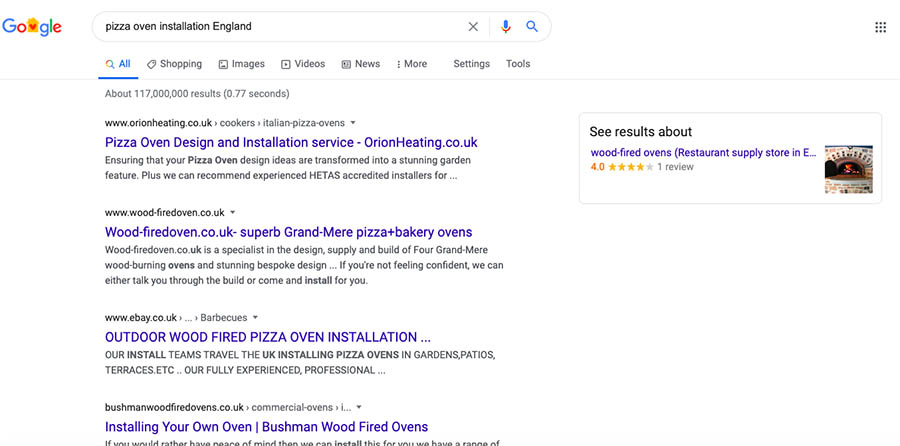
From the image above you will see that when we search that term there is a bunch we can learn. Notably:
Who ranks first, second, and third. Four to ten is important, too, but not nearly as much.
Who ranks at position zero? No-one. Why? Perhaps no-one has tried to optimise the ‘Map Pack‘ or just has not registered their local business via Google My Business. Two key ways you could jump the rankings of all these guys in perhaps a month! Perhaps not, but this is good news!
Are they competitors, or hobby sites, or Gumtree? No Gumtree, that is a good thing. All competitors, that is a good thing, but also, maybe a bit bad. It cuts both ways. Not having giant hobby sites at the top is a good thing as those will be hard to outrank. But also, this is only for one term – and it is a ‘money term’, importantly – so Google will comprehend your intent, and serve you some adverts for folks who can likely install a pizza oven for you. Keep that in mind.
Are there any Ads? Not at the top. Why? Perhaps their bid is too small. More later.
What is that thing on the right? A review? From where? Why? If I write a review, will it appear? What if my site allows reviews? Then will it appear, surely? That is all to do with site schema, and involves a little work, and a lotta know how. One day soon I will post on JSON-LD site schema and why Google loves it. Till then, feel free to Google those two things.
Step Two: Look at the bottom
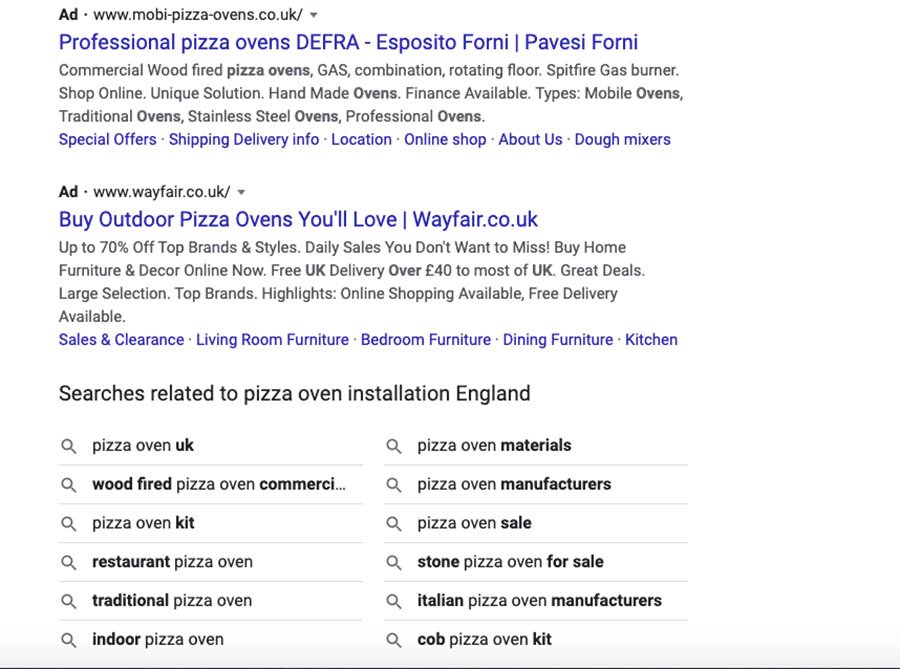
The oldest SEO trick in the book, and something we all kinda know but don’t often think about. Look at the bottom and the synonyms. See how Google is suggesting other things you would search for? Based likely on a combo of your previous search history, and if it’s a new search (but also not), also on what others have searched for that also searched for this, and then the good ol’ “obviously if you look for this you may want that” which you would see on something like Amazon, or any half-decent e-commerce store.
Notice also how there now are Ads! Strange, why didn’t they only appear at the bottom?! Likely, because the User Experience of folks clicking on those ads previously has been so poor compared to the organic clicks that Google only thinks it fair to show them at the bottom. It’s also highly likely it’s related to me and my search history, too. Who knows, all that I can say is: Google Ads does not seem too competitive in this niche/industry.
Step Three: Use a tool to see search volumes
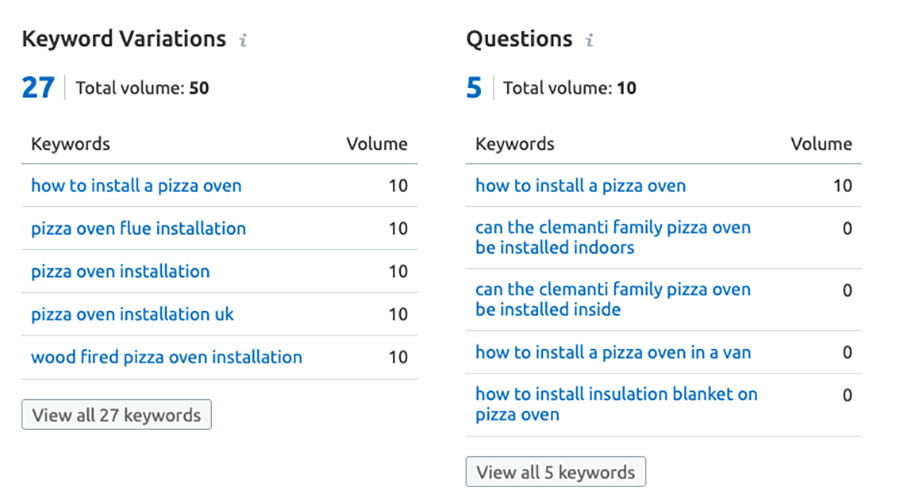
It all starts with a hunch, but it should not end there. If you find that your search term didn’t quite show you what you had expected, then start seeing how the synonyms perform. But mostly, use a tool like I do to see what similar terms are searched for – and very importantly, their search volume. If you have no money there are ways around this, or even use Keyword Planner within Google Ads (it’s free to use), or even Google Trends. The problem with those two is unless you have high volume keywords it’s not super accurate, but it is a great start. This is a great way to both a) see what folk look up and b) to develop a content strategy. Use these keywords and phrases to imagine how you can write 5-10 articles about the industry of pizza ovens, or even just for your general site content. You might even get some good business tips here, say, by looking at “clementi family” – what is that? A brand? An expert and his son who do installations? I am sure there is a gem in there somewhere.
Step Four: Go next level
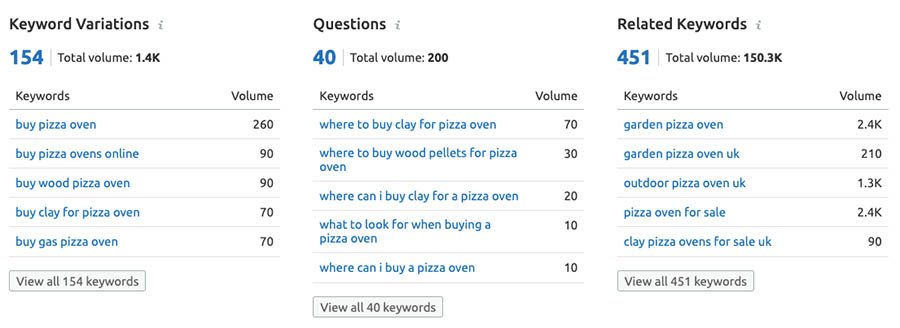
Now, for those more intermediate to advanced SEO folk, or someone who just has the interest and time to follow through with this advice: look at the above closely. These extra keywords are helpful, and can really help you put together amazing content (remember folks, content is king, so ensure your content is better than anyone else) but mostly, I want you to see the middle column. Questions… hmmm. You will see something call rich snippets in the world of SEO, and without going into it (you can) essentially if you ask certain questions on Google they often provide you answers before the typical organic rankings of 1-10 on the first page. We talked about the map being ‘position zero’ so this is not “position minus one”! Basically, if you were to Google something like “How to boil an egg” or “Best fettucine recipe” or “best time of year to visit florence” it’s likely that you will get answers in this novel format (novel in about 2019, maybe old now) where the answer is shown straight away, and often yo udon’t need to click through to anything. Crazy, and important to you because…. – you want to: answer questions! Do that and Google will love you. Why? Because they are an answer-giving machine. And, they don’t want to write the answers, they simply want to link to it. Logical, and obvious.
Step Five: Competitors
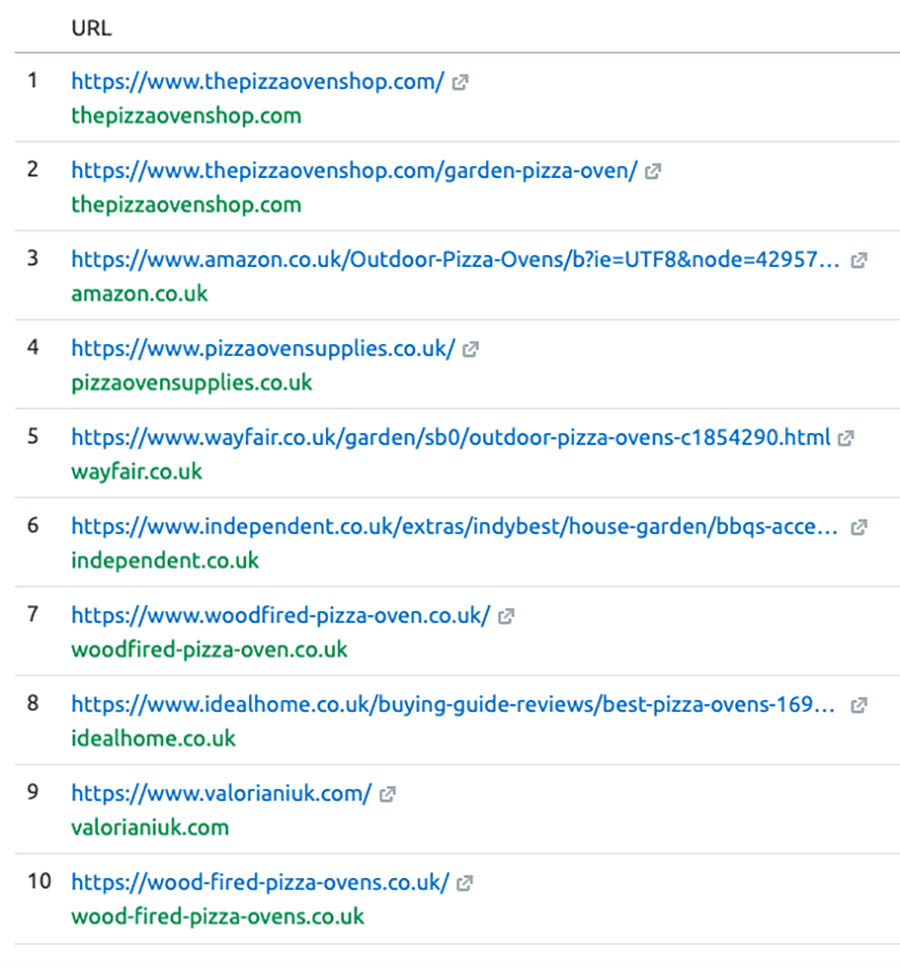
Do some good ol’ classic marketing and go look up all the competitors. See how their sites look, look at their pricing, their design, their location, how their UX works, etc etc. And, if you have the SEO tools, then
- Check all the links they are getting to their website
- All the keywords they rank for
- Whether they are bidding on Google Ads
- And social media presence
- There is more, but the above is enough for now…
Step Six: Take it next, next level
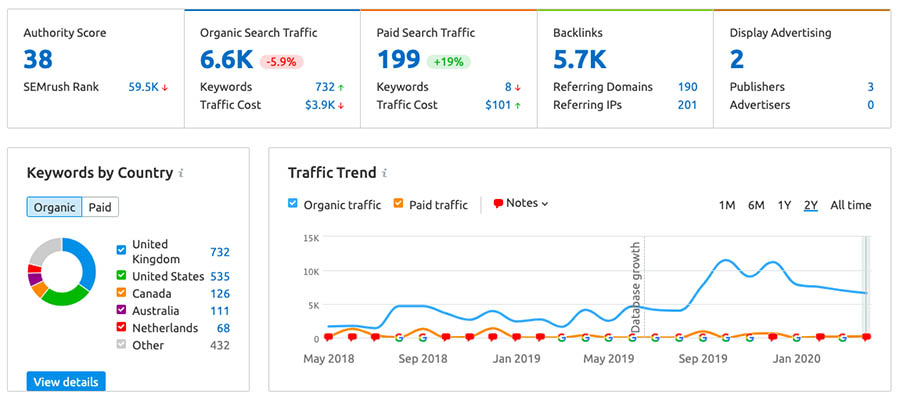
Now, looky-here I do say. I’ve checked out the top competitor (the one that ranked first on our ‘money word’ keyword) and see what I can see. How do they fare for organic searches by country. Do they have paid advertising? How long have they been going for? Look at their traffic growth. Look at the seasonality. See all the backlinks. It goes on forever and a day. So much valuable data. Get some insight for free, and a lot more if you sign up and pay for it 🙂
Step Seven: Perfection
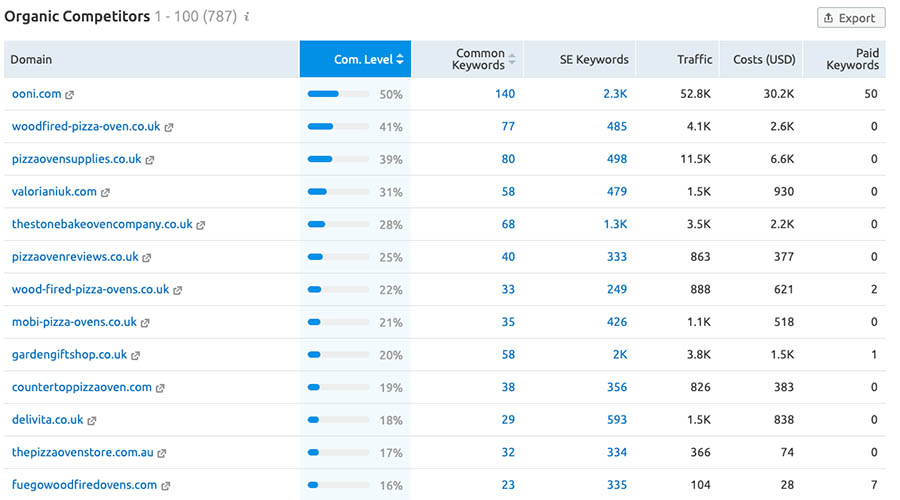
Well, truly, this is more of the same but the idea is that you can see so so much data if you wish to! See how hard it will be to rank your website, how much traffic one gets, if they are UK based or American, if they’re doing PPC, what you can expect to pay if you choose to do PPC, and more. You might decide that the best bet is skip SEO altogether and cold call people (please don’t!), or build up word-of-mouth, or only do social media. Sometimes PPC alone is the best avenue, but always, the dream is this: plan it all meticulously, knock off a few important tasks a few at a time each month and down the line: the tortoise wins the race. The tortoise being diligent, dutiful, slow but steady SEO.
Hope that helped and showed you a little into the world of “thinking SEO” – the basics of what I would do before I told a client what to do next. This is only Part One in a series (that may take years to complete) but hopefully we can all learn together and these become resources that help SEO folk, business owners, marketers, and more!
